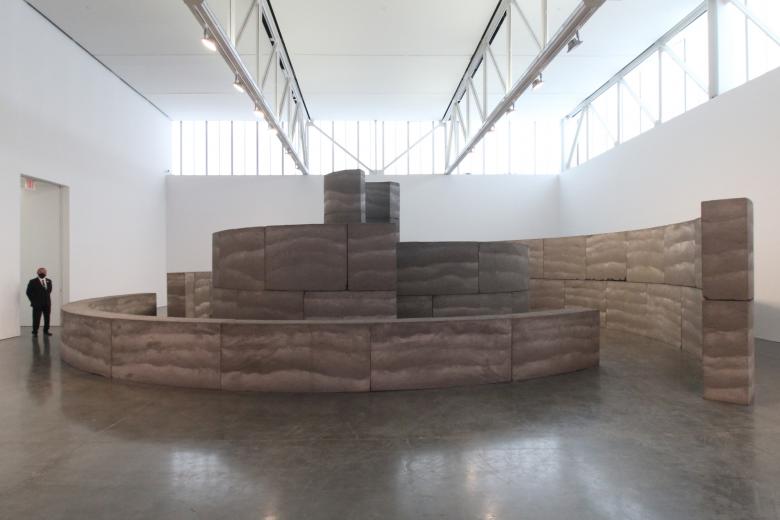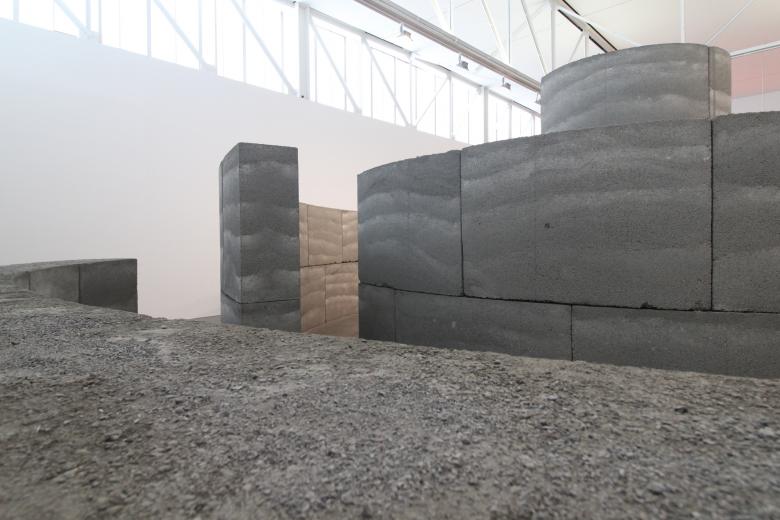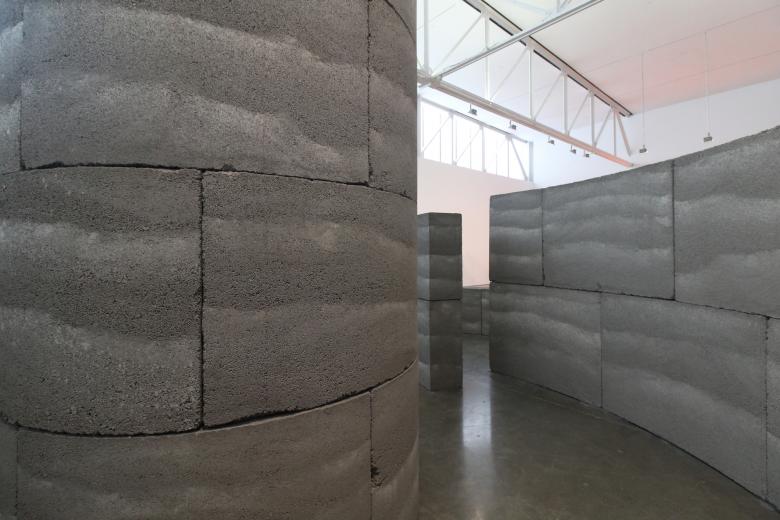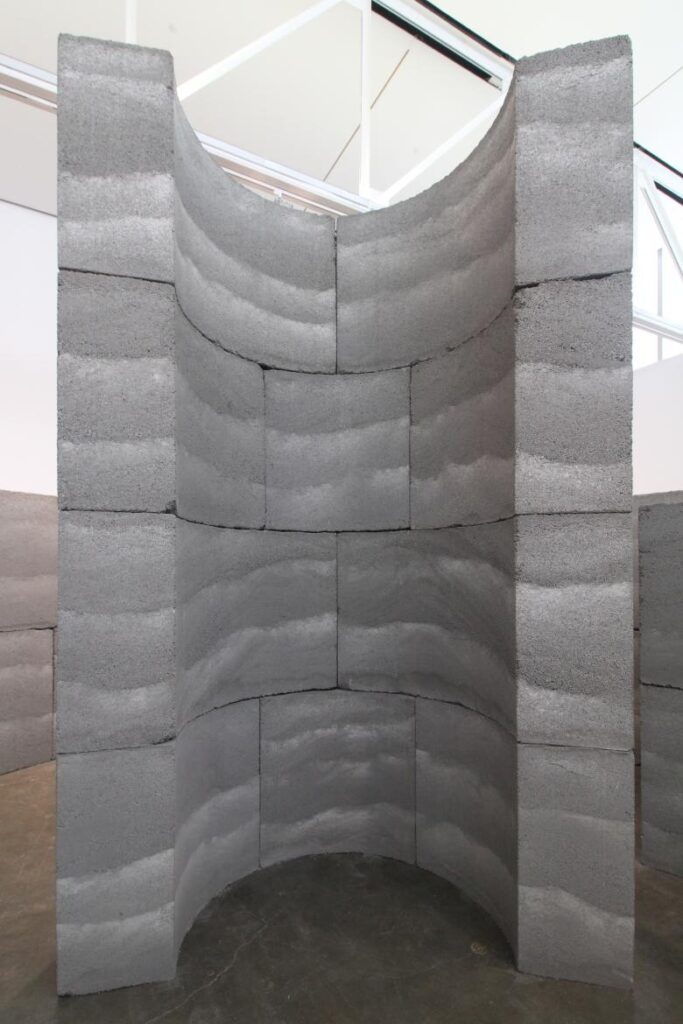Location: Gagosian Gallery, New York City
Completion: 2021
Architect: David Adjaye
‘Asaase’ takes the form of a labyrinthine, walls made from stacked blocks increasing in height toward a “conical vertex” in the center. The British architect’s first large sculpture was one piece to Social Works, a group exhibition of a dozen Black artists, curated by Antwaun Sargent, to engage with social space “as a community-building tool.”

“It’s this idea of construction that works across many modes of sensory perceptions….it’s designed to create moments where the audience is just in – between earth. This is something people have forgotten how to do.”
Constructing the rammed earth blocks began with a combination of crushed limestone and schist from New York, with the tops of the shorter walls at the perimeter revealing some of the loose aggregate from the process.
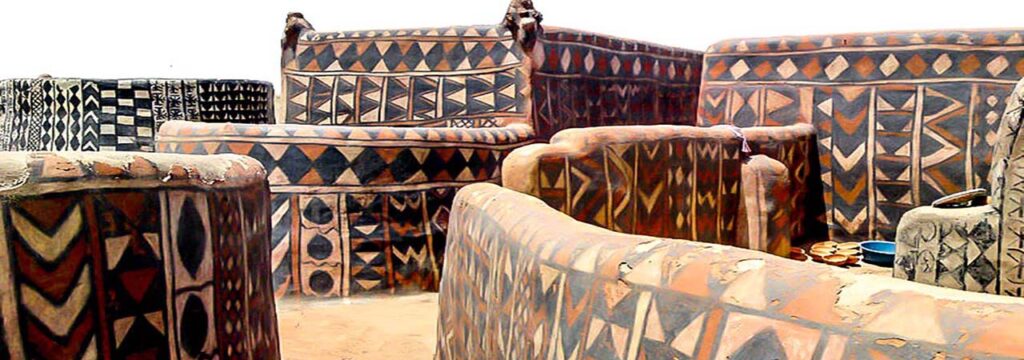
The ‘Asaase’ project incorporates a sense of collective memory and aims to evoke a deeper connection with the land, specifically traditional black architecture and historical identities. References to historic works of West African architecture such as the Tiébélé royal complex in Burkina Faso and the walled city of Agadez in Niger, can be seen in the sculpture’s maze form.
The project reflects on the unique essence of a place, drawing connections between the present and the past by examining Black communal spaces across the African continent. It delves into how these spaces served as central hubs for families and communities to gather.
The curved walls invite visitors to explore the spaces between the gallery walls and the piece before entering the spaces inside. These overlapping walls mean there are numerous ways to encounter and move through the installation.
‘Asaase’ contemplates the idea of fragments—both in terms of physical spaces and the buildings constructed from the earth—that provided the backdrop to everyday life for Black individuals, symbolizing a connection to heritage and history. What Adjaye describes as “fragments of chambers,” can be demonstrated the most by the niche at the center of the maze.
References
- David Adjaye Tries Rammed Earth
- Adjaye Associates
- World Architects
- Photography: John Hill

